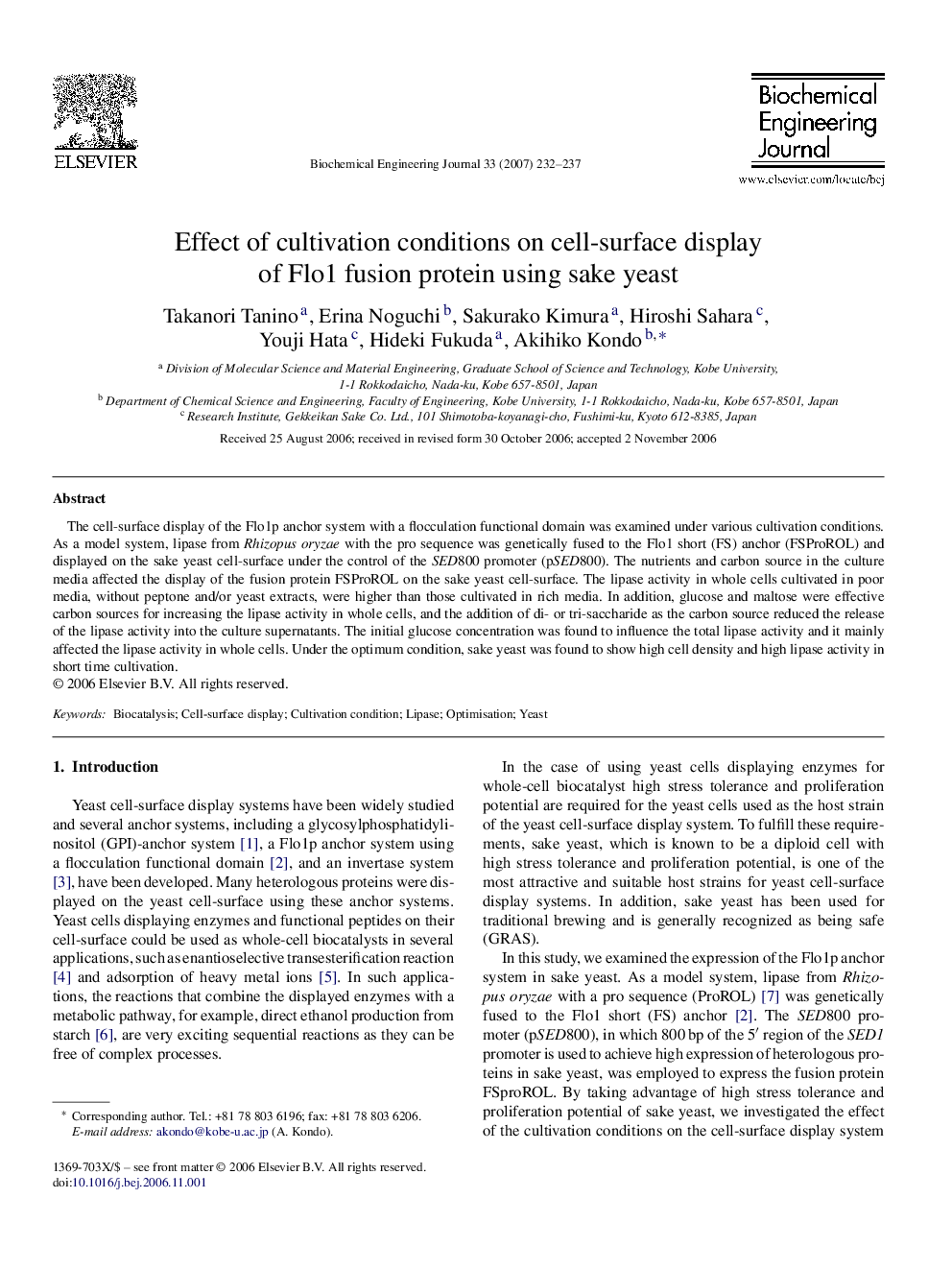| Article ID | Journal | Published Year | Pages | File Type |
|---|---|---|---|---|
| 4757 | Biochemical Engineering Journal | 2007 | 6 Pages |
The cell-surface display of the Flo1p anchor system with a flocculation functional domain was examined under various cultivation conditions. As a model system, lipase from Rhizopus oryzae with the pro sequence was genetically fused to the Flo1 short (FS) anchor (FSProROL) and displayed on the sake yeast cell-surface under the control of the SED800 promoter (pSED800). The nutrients and carbon source in the culture media affected the display of the fusion protein FSProROL on the sake yeast cell-surface. The lipase activity in whole cells cultivated in poor media, without peptone and/or yeast extracts, were higher than those cultivated in rich media. In addition, glucose and maltose were effective carbon sources for increasing the lipase activity in whole cells, and the addition of di- or tri-saccharide as the carbon source reduced the release of the lipase activity into the culture supernatants. The initial glucose concentration was found to influence the total lipase activity and it mainly affected the lipase activity in whole cells. Under the optimum condition, sake yeast was found to show high cell density and high lipase activity in short time cultivation.
